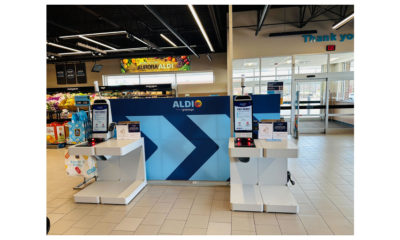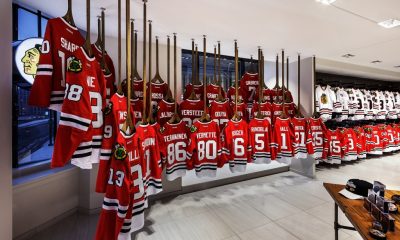OVER THE COURSE of my career designing supermarkets, there’s one expression I’ve heard more than any other: The product is the hero. This axiom of advertising used in the context of designing a grocery store communicates that the product is, after all, the reason why customers walk in. By implication, store design is secondary. However, I challenge this for two reasons: the increasing draw of online sales and the inherent oversight of the true star in a food-shopping journey. Grocery stores designed around the principles of storytelling can create experiential environments as compelling as any world-class retail destination.
Due to the current COVID-19 pandemic, the food shopping landscape is forever altered. Between March and April 2020 alone, there was growth in five key performance metrics for online grocery delivery and pickup: overall sales, average spent per order, number of orders, number of customers ordering and frequency of orders. The fear of contamination has all but eliminated erstwhile barriers to alternative purchasing avenues. Shoppers still want the products, but they’re opting not to go into a store to personally pick them from the shelves. The diminishing power of the product to draw shoppers in is likely to be permanent, though to what degree remains to be seen.
Casting the product as the hero misses retail’s most critical player – the customer. It’s the customer who is at the center of the purchasing act. Every one of us, every day, is the star of our own story, the central character in the running narrative that is our daily lives. When a person walks under the air curtain, they don’t suddenly recast themselves as a supporting player in the store’s narrative. Quite the opposite: the store becomes a location in the story of their lives. To focus on the product as hero is to unintentionally build tension between store and star.
Contemplating who is the star – the hero – of a supermarket environment is a critical part of a larger design and development strategy. What is going to draw people into a grocery store, especially during these volatile times? Environments that provide immersive, novel experiences with solutions-oriented results will win customers’ confidence to set foot back in store. To create these environments, we can leverage the power of storytelling and narrative structure.
Compelling stories have a surprisingly simple structure: there’s a hero, a villain to vanquish and challenges to overcome. Most importantly, there’s a guide to help the hero along the way, who understands what is at stake, gives our hero a plan and calls them to action, all of which leads to success. Retailers and store designers can use this universally popular construct to attract attention, elicit emotion, compel action and foster enduring loyalty.
We all love rooting for the hero, but I wager no one would be emotionally invested enough to root for broccoli, noodles or canned soup – though I suspect most of us have been rooting for hand sanitizer lately! Shifting our outlook to cast the customer as the central figure and hero rather than the product means a different take on how stores are designed. How can a grocery stores unquestionably emphasize in their design that they are rooting for their customers?
Advertisement
Especially nowadays, it’s easy to understand the existence of a villain. The virus is an existential threat, the ultimate baddie infiltrating all our stories. There is another villain in our lives that most of us are fortunate enough to have never encountered: hunger. At its core, a grocery store is a place free from hunger. It’s our collective panic room, providing the tools and ingredients we need to defeat the villain. Recent images of empty shelves are the clearest example of the ever-present villain that supermarkets are uniquely positioned to vanquish.
While vanquishing hunger is the main goal when visiting supermarkets, there are many challenges to overcome along the way. The straightforward task of feeding your belly can be complicated by potentially stringent dietary needs, particularly selective tastes, a desire for a very specific flavor profile, or more basic hurdles like a lack of time, knowledge or confidence.
Every hero needs a guide. A guide defines purpose, clarifies intent, and provides motivation, illuminating the hero’s path with their experience, insight, and general wisdom. A guide helps the hero see the stakes and devise a response with the greatest chance of success. In food retail, the supermarket is ideally positioned to play this role. Whatever challenges cloud customers’ minds as they walk through the front door, the solutions they encounter will help them recognize the retailer’s knowledge, seek their wisdom, and rely on their guidance.
The guide plays a key role in devising a plan. The “pile it high and let it fly” approach is no longer enough – unless it’s toilet paper. What is a grocery store’s plan for getting dinner on the table quickly? Or for a healthy breakfast? Or a celebratory feast? Certainly, right now, the plans for how to keep staff and customers safe and healthy are indescribably valuable. I cheered when stores began implementing strategies that allowed more vulnerable individuals and essential workers to shop first thing in the morning. Those are life-saving measures, a stark example of the guide protecting their hero. Retailers should continue operating from this mindset. And if they don’t, consumers will seek other guides, or formulate their own plans, and that plan is likely to exclude less helpful retailers.
Plans require action in order to succeed. Like the hero in every good story, customers need a push. Admittedly, we are very distracted heroes. The cacophony of our every waking moment – where we may be bombarded by more than 5000 ads per day – demands very clear communication to cut through all the noise. The guide’s call to action must be motivational and consequential, expressing the tangible costs of inaction. Retailers must create a compelling image of success, achievable when customers engage with the brand.
And when the hero succeeds and the journey completes, there’s another adventure coming just a few days later. Food shopping is a truly never-ending story. How will the guide enhance the hero’s next grocery run? What new challenges are walking through the door? What new solutions will be presented? What new palate pleasing thrills will the hero experience? Grocery stores can be a place of adventure. They can nourish not just our bodies but also our soul, spirit, mind, or however one may describe the self-awareness of being human.
Advertisement
During the course of this ongoing series, we will highlight grocery store operators, designers, retail spaces and strategies that transcend the basic imperative of a supermarket. Whether directly implementing the narrative structure or otherwise creating compelling environments, they illustrate that supermarkets, too, can be transformational retail experiences.

 Photo Gallery3 days ago
Photo Gallery3 days ago
 Headlines1 week ago
Headlines1 week ago
 Sector Spotlight2 weeks ago
Sector Spotlight2 weeks ago
 Headlines1 week ago
Headlines1 week ago
 Headlines4 days ago
Headlines4 days ago
 Headlines2 weeks ago
Headlines2 weeks ago
 Designer Dozen1 week ago
Designer Dozen1 week ago
 Headlines2 days ago
Headlines2 days ago




















